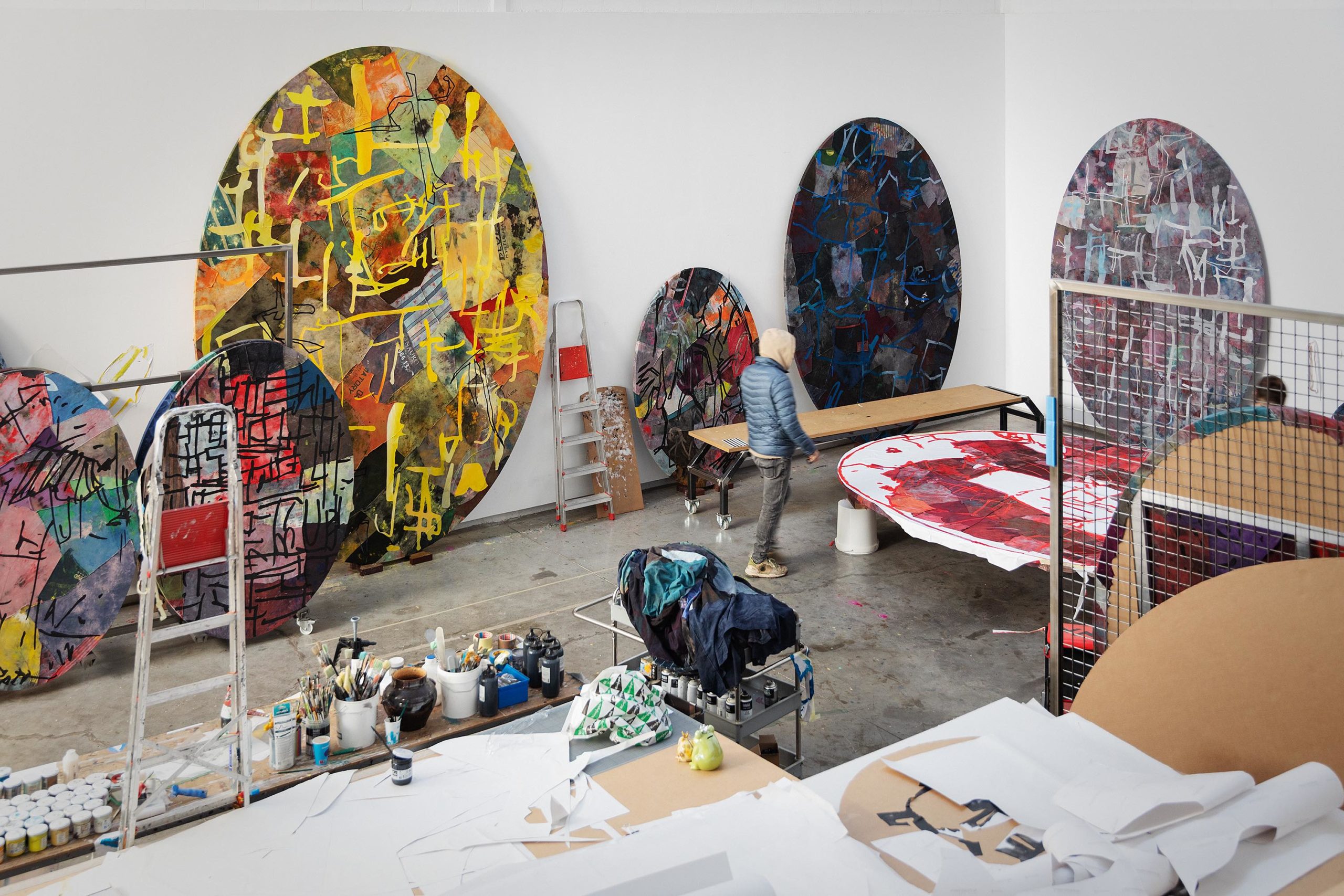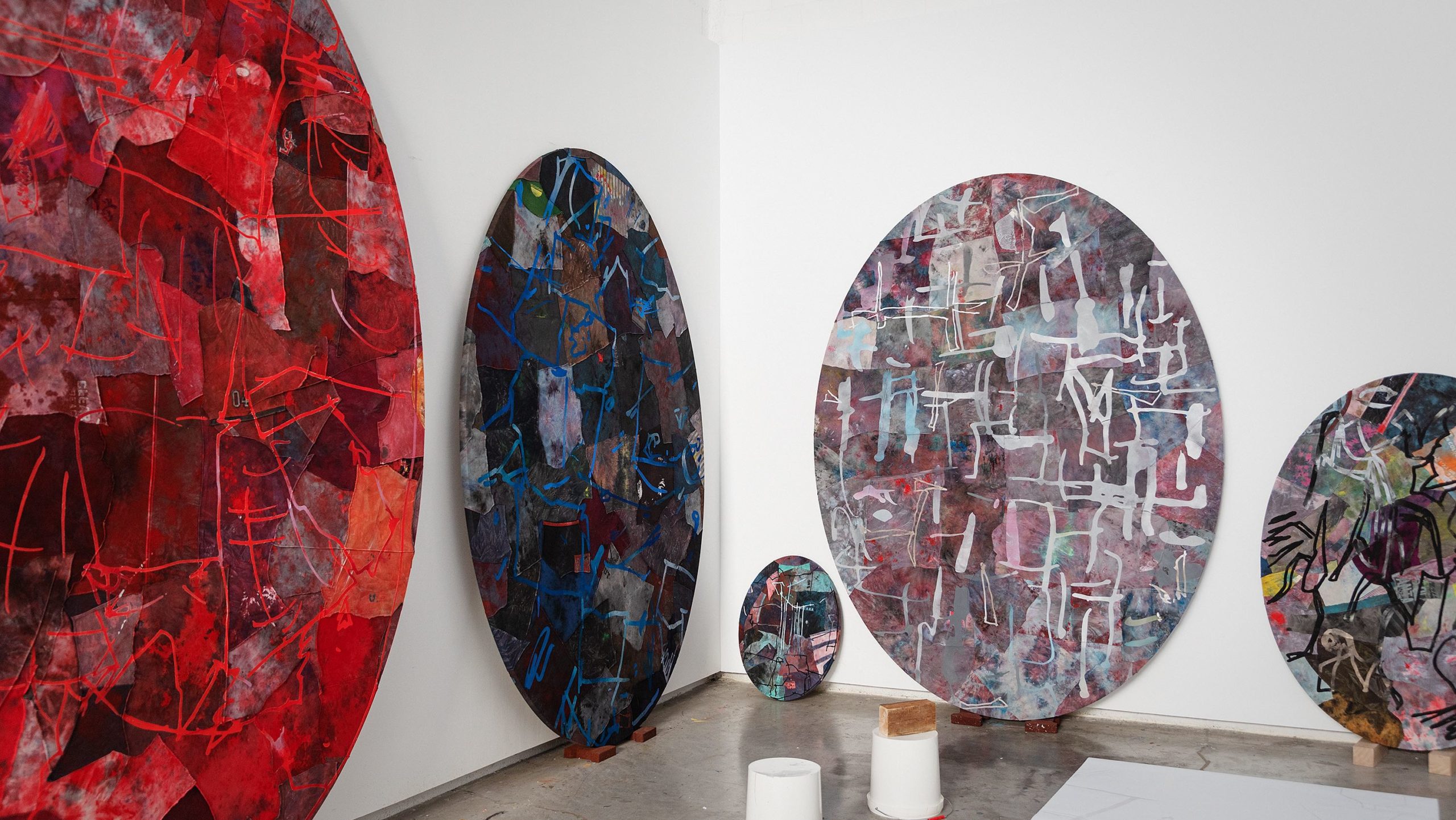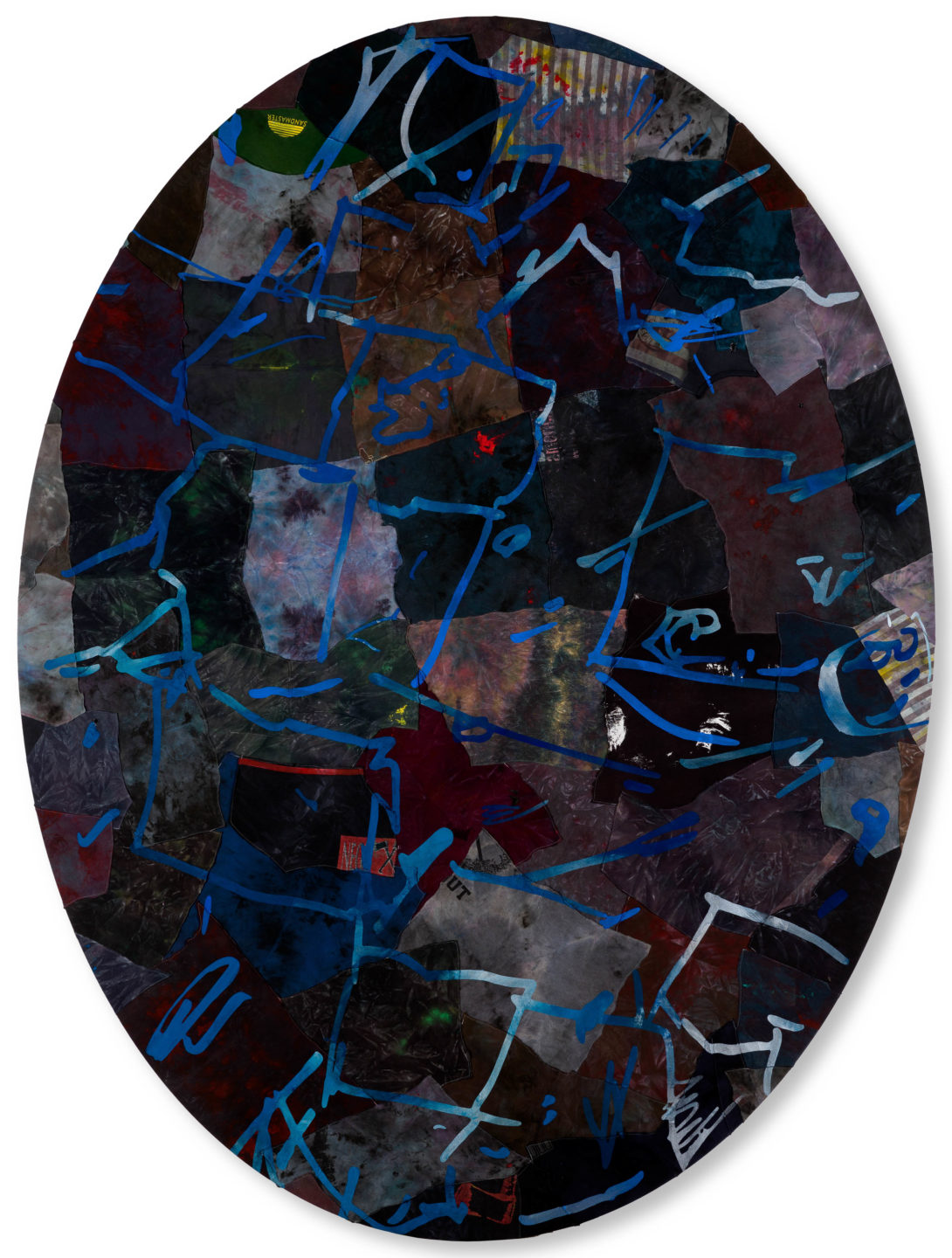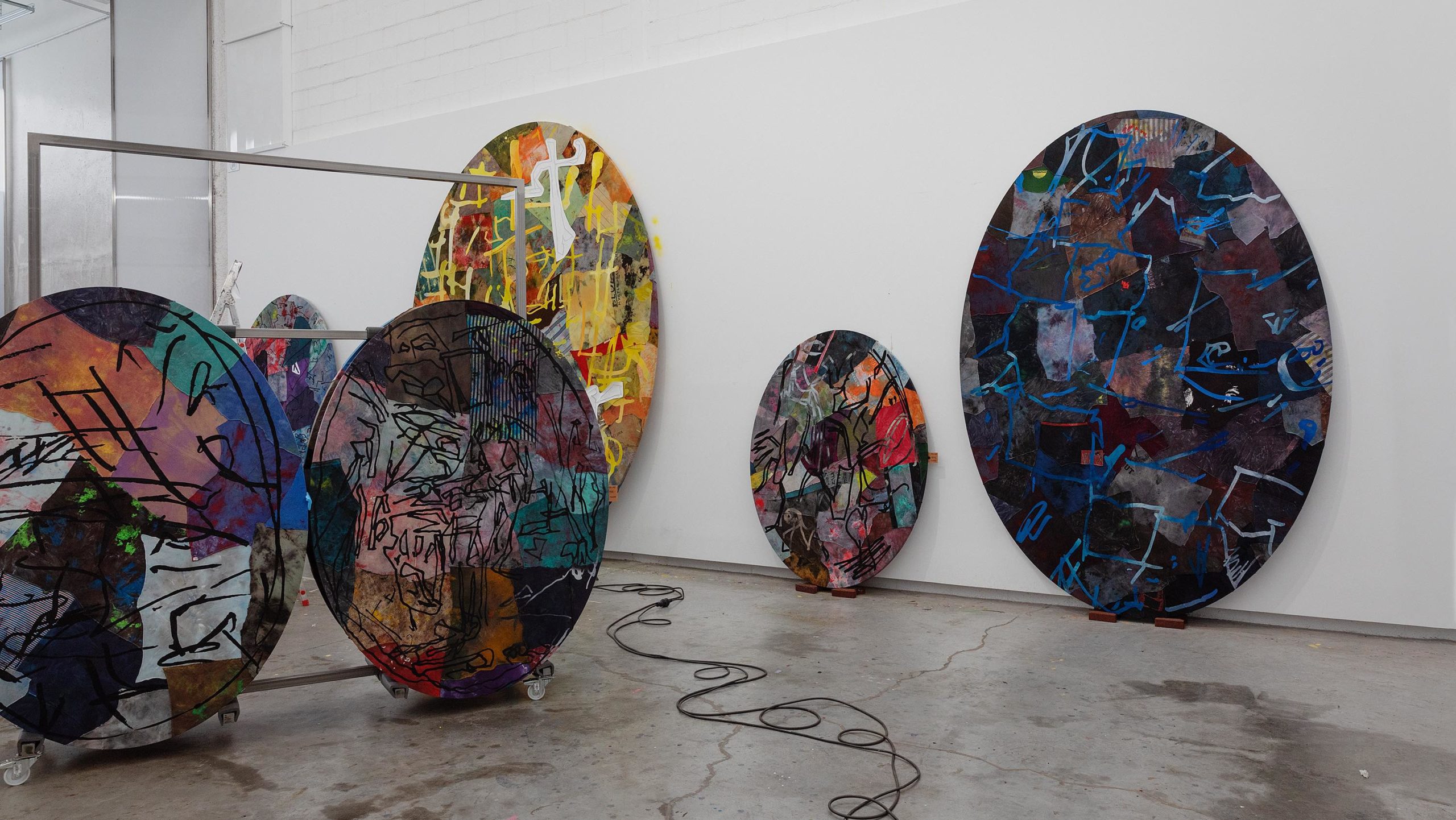Secundino Hernández: Problematic Corners
Exhibition 10 April–18 May 2024
16 Wharf Road, London N1 7RW
Tuesday-Saturday: 10am–6pm.
Victoria Miro is delighted to present new paintings by Secundino Hernández. The Spanish artist’s fifth solo exhibition with the gallery features a dynamic series of oval works that expand on his unique painting language.
Secundino Hernández’s practice is founded on a quest for new forms and a spirited enquiry into the tools and techniques required to make a painting. This exhibition features a series of oval-shaped works that forge innovative aesthetic ground while drawing upon some of Hernández’s best-known processes and motifs – colours that appear to burst and glide, calligraphic mark-making combined with a stitching process that enriches the linear and structural underpinnings of his work.
The exhibition is accompanied by new writing on the artist by David Morán Álvarez and Max Andrews, which will feature in a forthcoming publication. Excerpts below. It is also available to view on Vortic
Download a list of works on view in the exhibition
Film and studio photography, Secundino Hernández Studio, Madrid, 2024
Traditionally the oval form, found in religious art where it signifies divinity and the connectedness of mortal and immortal things, as well as the ellipsis used in composition, drawing together disparate motifs, are employed to create a sense of rhythm, unity, or transcendence. The circular swoop of Hernández’s avowedly secular paintings is one that similarly directs eye and mind – to the myriad ways in which lines gravitate across patchworks of sonorous colour. Enfolded too are thoughts around cycles of production and the fruitful ecology of the artist’s studio.
Hernández has said that he likes ‘to create an environment where one thing generates another’. Known for collapsing traditional distinctions and hierarchies of processes and materials, he engages in a dialogue around cyclical methods of construction, deconstruction and reconstruction. As with his celebrated ‘palette’ paintings – expanded and highly visceral iterations that take their cue from the accumulations of the traditional artist’s palette – these new works examine aspects of medium and process, playfully elevating the overlooked or under-considered and investing them with compelling presence.
The surface of each new painting is created not from traditional canvas but from sections of cloth, used by the artist during a screen-printing process in the production of earlier paintings. Infused with pigment from printing screens as they are wiped across them to clean them, the cloths become in effect small colourfield paintings in their own right. Precisely stitched together and stretched on to oval supports, these complex surfaces are then delineated by painted gestures that, while appearing spontaneous and free, are in fact rigorously planned.
Oscillating between freedom and control, each painting is dependent on its own contingencies and tangles of relations between gesture and mosaic-like ground. The eye becomes engrossed in how a flatly painted masked line traverses its stitched equivalent or contrasts with the free washes of colour beneath it, while the cloths themselves sometimes bear a pattern of stripes or part of an existing logo, creating further visual anchors and layers of cultural reference within these rich chromatic fields.
What becomes apparent is that, while the oval form of the painting does away with the ‘problematic corners’ referred to in the exhibition title, Hernández’s process creates countless additional corners where his sections of cloth meet. This might be a metaphor for the artist’s methodology, doing away with one concern only to create further challenges and opportunities, all the while alerting us to what is happening within and between the works on view and rolling us into his endlessly generative process.
Secundino 1
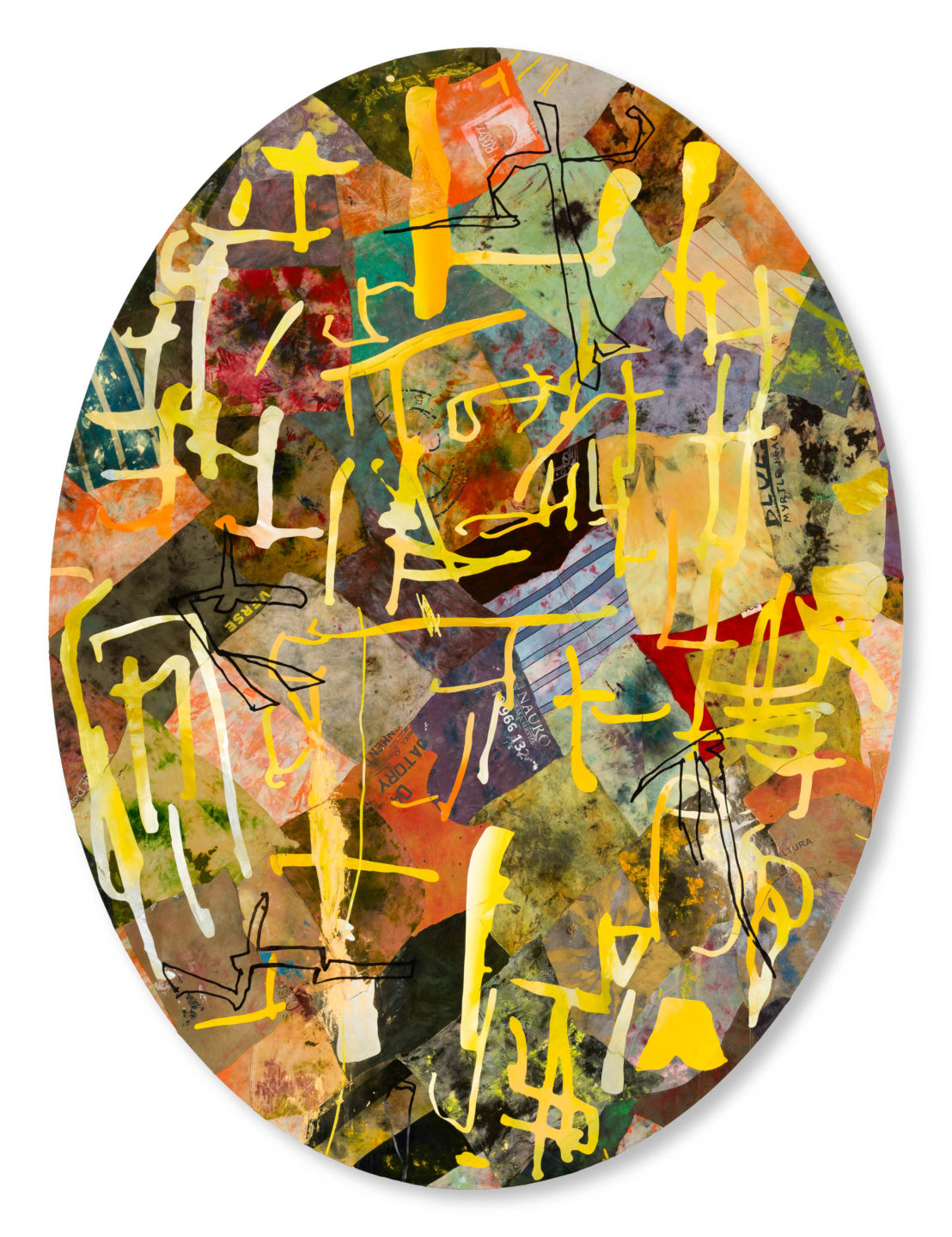
Acrylic, vinylic emulsion and dye-transfer print on canvas
370 x 278 cm
145 5/8 x 109 1/2 in
Secundino Hernández, Myrtle Beach, 2024
More info‘And thus, the oval emerged as a solution – a shape that offers no corners to hide behind.’ — David Morán Álvarez
‘The world of Secundino Hernández is the result of a sophisticated generative architecture. “To balance out the composition, the corners had been accumulating a growing number of elements. They had become disproportionately important,” the artist explains. And thus, the oval emerged as a solution – a shape that offers no corners to hide behind.’
Secundino 6
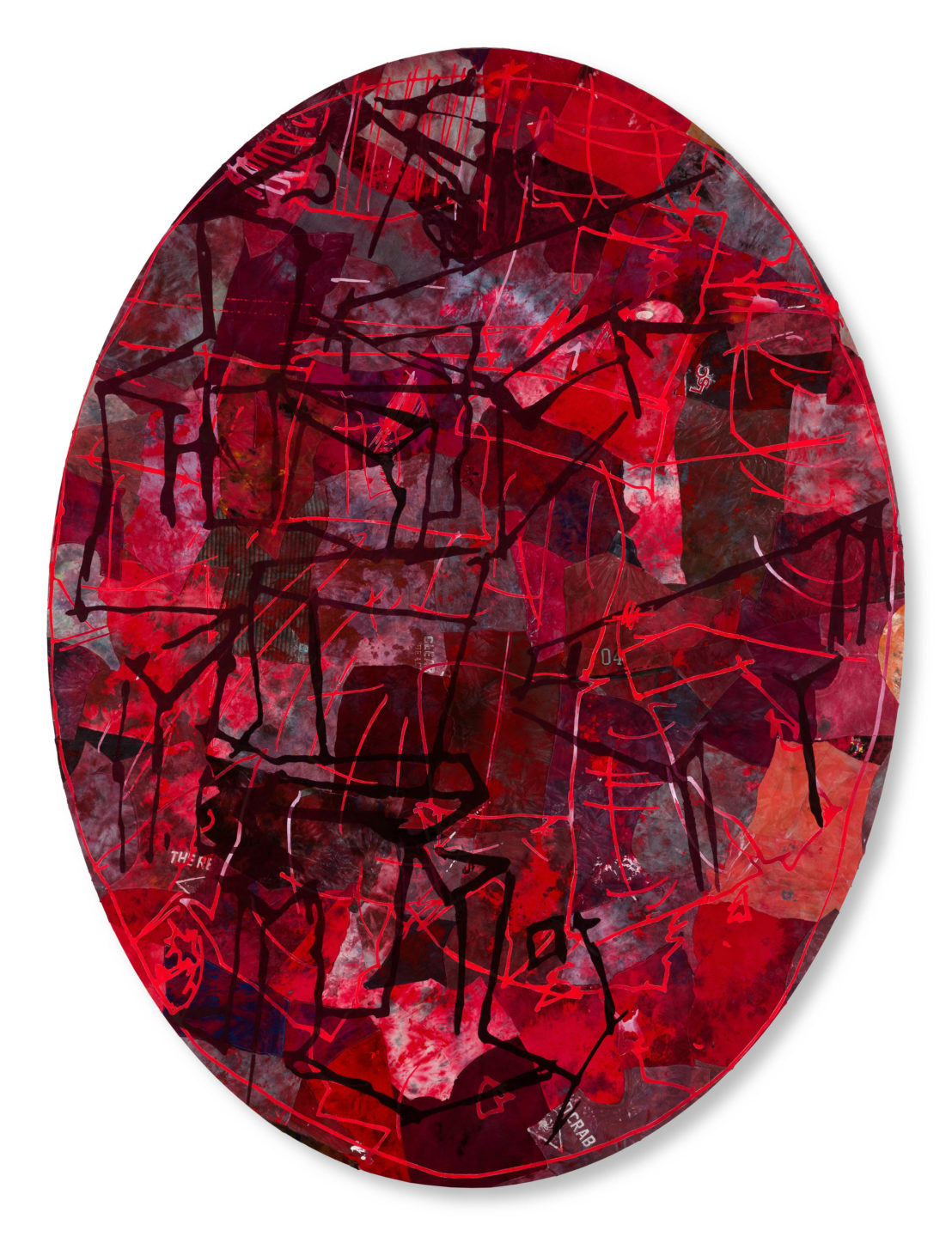
Acrylic, vinylic emulsion and dye-transfer print on canvas
370 x 278 cm
145 5/8 x 109 1/2 in
Secundino Hernández, Spithere Crab, 2024
More info‘What happens if we assume that Spithere Crab, Myrtle Beach, and Newport Classic, are less in thrall to the conventions of easel painting (and traditional colour theory) and are acting more as if they were artefacts born of the symbolic decorative arts?’ — Max Andrews
Let’s include a paragraph on the early history of ellipse-shaped representational constraints and the semiotics of dispensing with spandrels? Would it not lend the works of Problematic Corners an unmistakably European disposition, as remnants of the ancien régime oval painting craze at the Paris Salon of 1765? Scions of Eustache Le Sueur’s ovate panels for the Cabinet de l’Amour in the Hôtel Lambert of 1645?… While what happens if we assume that Spithere Crab, Myrtle Beach, and Newport Classic, are less in thrall to the conventions of easel painting (and traditional colour theory) and are acting more as if they were artefacts born of the symbolic decorative arts? As if they’re heraldic achievements, bedizened Hernández coats of arms depicted on elliptical shields, where red would be ‘gules’, blue ‘azure’, and yellow ‘or’?
Secundino 3
‘The oval is deeply ingrained in the Spanish imagination.’ — David Morán Álvarez
The oval is deeply ingrained in the Spanish imagination. It takes on the form of the mystical mandorla that encloses the Pantocrátor at the heart of its own creation. The oval, therefore, commonly symbolised the sacred form of the cosmos until the Renaissance and Baroque periods, when it was stripped of its symbolic power to frame busts and human faces.
Secundino 2
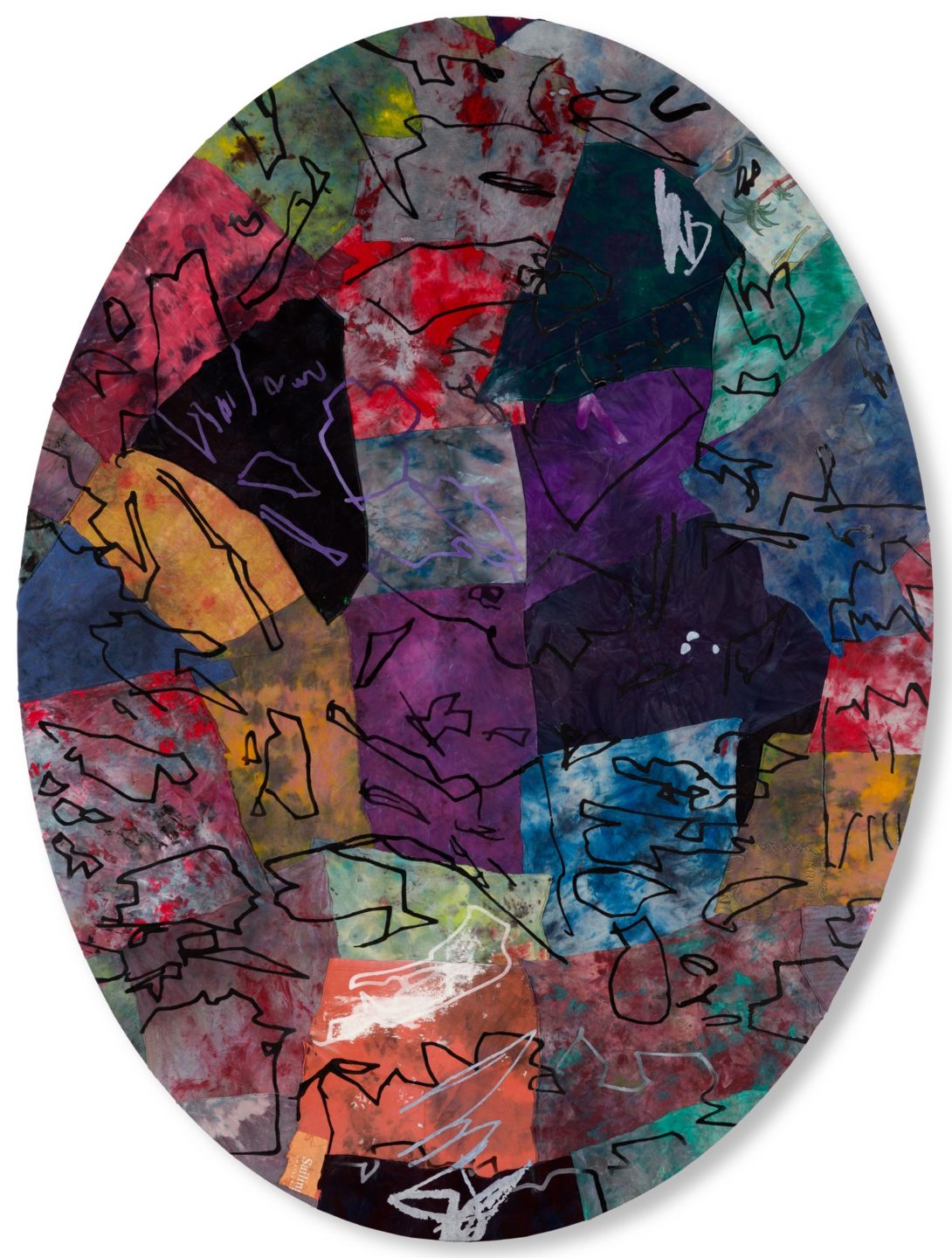
Acrylic, vinylic emulsion and dye-transfer print on canvas
240 x 180 cm
94 1/2 x 70 7/8 in
Secundino Hernández, Tomorrow Will Be Too Long, 2024
More info‘…should we ask: do these rags not represent everything that passes? The excesses of consumer society?’ — Max Andrews
As we note how the oddments of salvaged materials represent various provenances and construction methods, how discarded garment fragments exhibit inconsistent qualities of elasticity, grain run, and colour penetration, as well as how a multitude of textures arise from differences in the finishing of the constituent fabrics, should we ask: do these rags not represent everything that passes? The excesses of consumer society?
Secundino 5
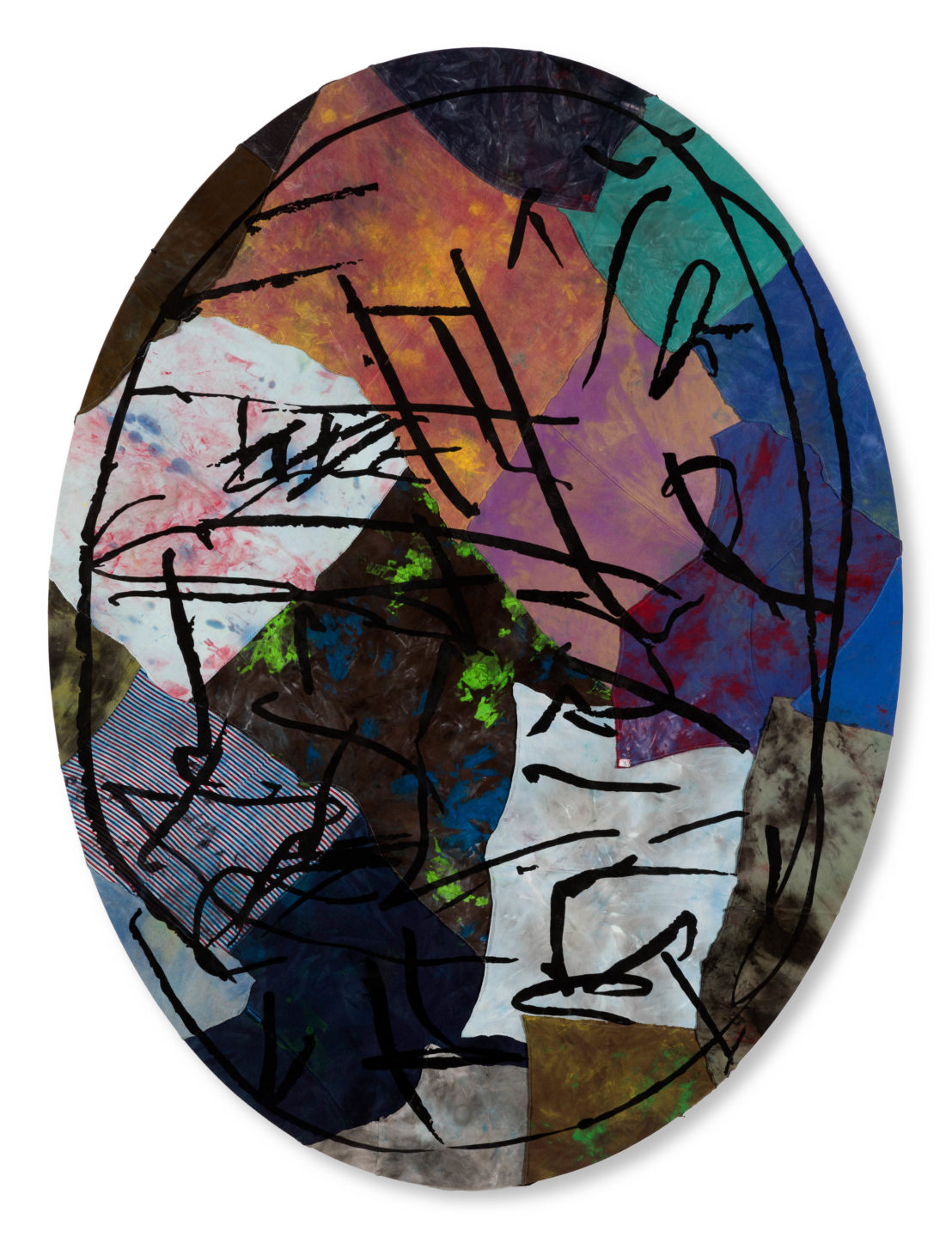
Acrylic, vinylic emulsion and dye-transfer print on canvas
180 x 135 cm
70 7/8 x 53 1/8 in
Secundino Hernández, I Can’t Let Go, 2024
More info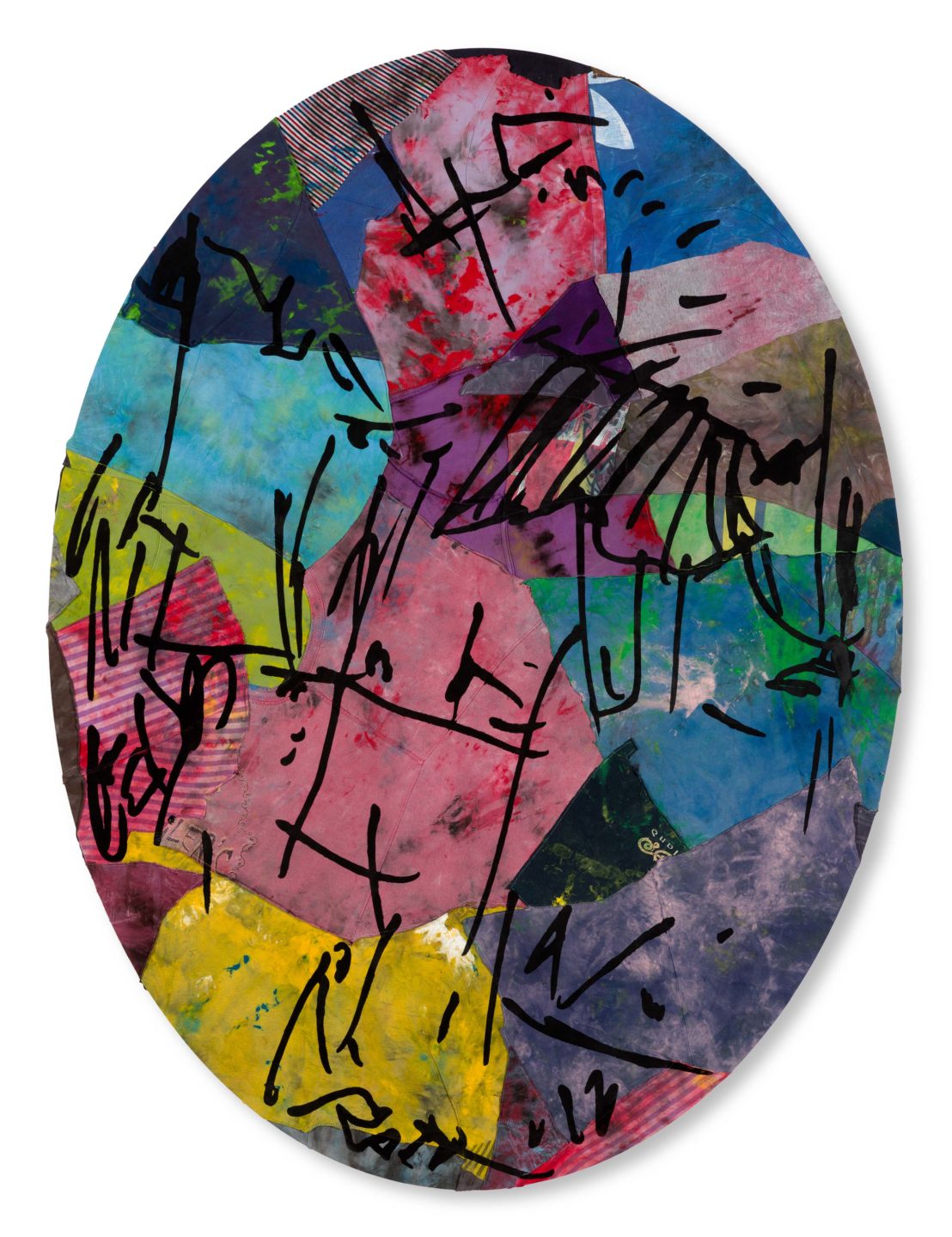
Acrylic, vinylic emulsion and dye-transfer print on canvas
180 x 135 cm
70 7/8 x 53 1/8 in
Secundino Hernández, Toulouse-Lautrec, 2024
More info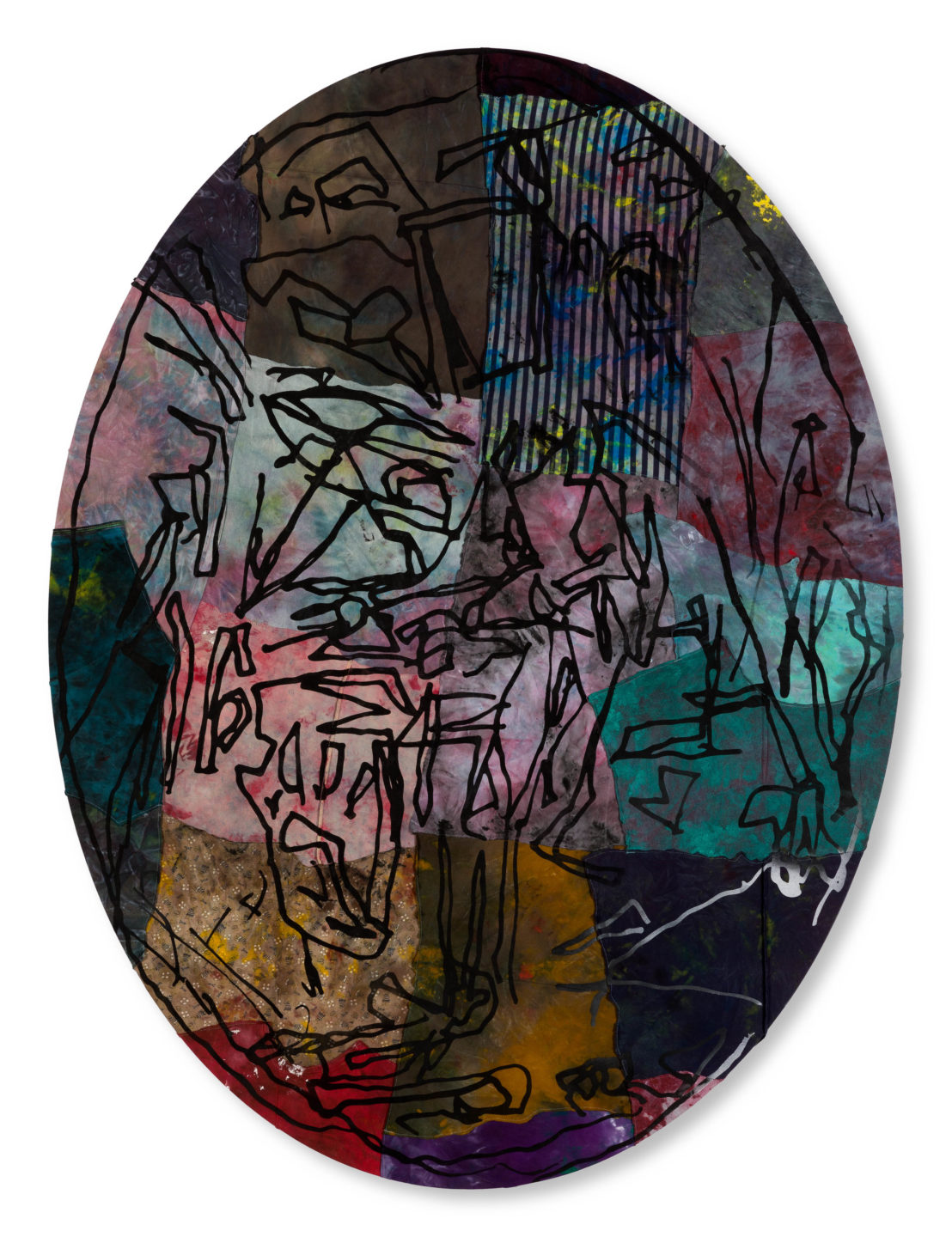
Acrylic, vinylic emulsion and dye-transfer print on canvas
180 x 135 cm
70 7/8 x 53 1/8 in
Secundino Hernández, Those Memories, 2024
More info‘The success of these newest, paradoxical, and only seemingly-atypical ovals is to fit seamlessly into the pictorial taxonomy of Secundino Hernández.’ — David Morán Álvarez
Through these cornerless paintings, the artist expands and complicates the genealogy referenced by the entirety of his work. Because it is this very notion of genealogy that allows for various references, discourses, practices and techniques to complement one another, as well as the painting cycles in which they are embodied. The success of these newest, paradoxical, and only seemingly-atypical ovals is to fit seamlessly into the pictorial taxonomy of Secundino Hernández.
Secundino 4

Acrylic, vinylic emulsion and dye-transfer print on canvas
370 x 278 cm
145 5/8 x 109 1/2 in
Secundino Hernández, Newport Classic, 2024
More info‘Would it be problematic to conclude that each series of paintings is a way of going beyond your duty as an artist? In other words, are you not keenly aware of wanting to do more than is strictly necessary when something else would still be acceptable? Precisely not cutting corners, then?’ — Max Andrews
Let’s end with a question? Would it be problematic to conclude that each series of paintings is a way of going beyond your duty as an artist? In other words, are you not keenly aware of wanting to do more than is strictly necessary when something else would still be acceptable? Precisely not cutting corners, then? A method of fuga hacia adelante, fleeing forward? Painting in other words?
About the artist
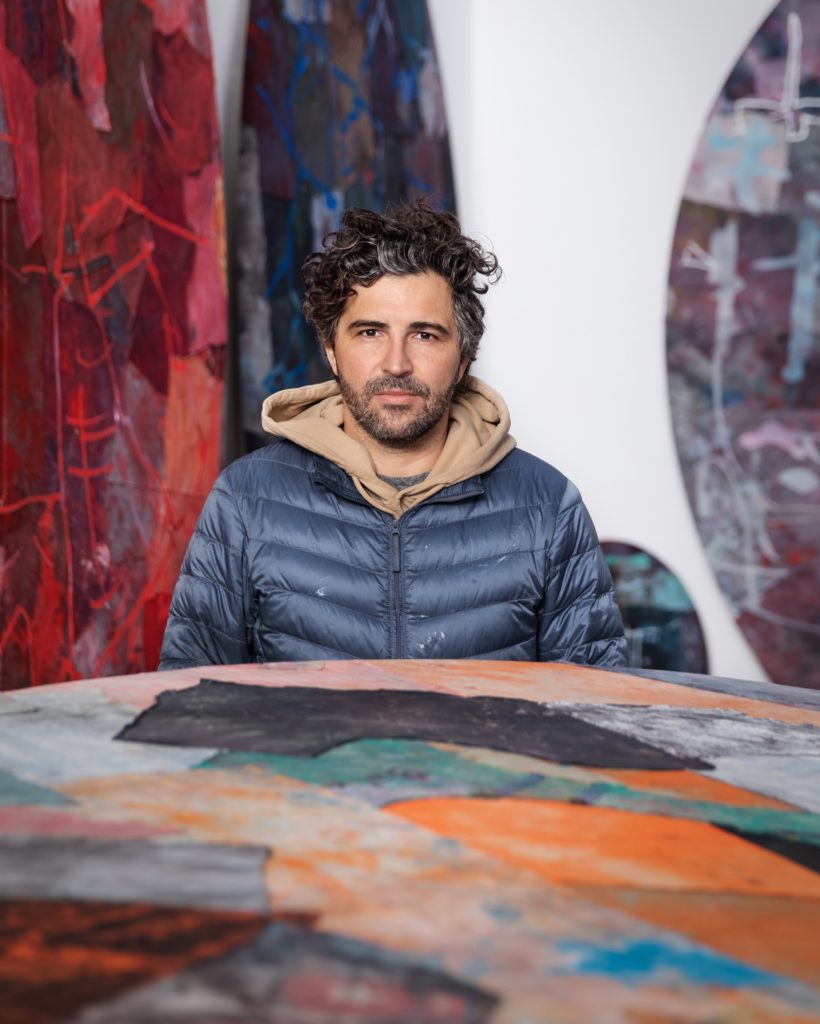
Secundino Hernández was born in 1975 in Madrid, where he currently lives and works. Solo institutional exhibitions of his work have been held at venues including Miettinen Collection, Berlin, Germany (2022); Insular Museum, Cabildo of La Palma, Spain (2021–2022); CAC Málaga, Spain (2018); Taidehalli Helsinki, Finland (2018); Yuz Museum, Shanghai (2015); Maison Louis Carré, Bazoches-sur-Guyonne, France (2014).
The artist has also participated in institutional group exhibitions including Entre los ojos el deseo, Olivia Arauna Collection, Alcobendas Art Center, Madrid, Spain (2024); Extraordinary Form, Miettinen Collection, 2000s-Present, Salon Dahlmann, Berlin, Germany (2024); The lens within your heart, Takeuchi Collection, What Museum, Tokyo, Japan (2023); Pintura. Una renovación permanente, Patio Herreriano Museum, Valladolid, Spain (2021); The Art Show, Art of the New Millennium, Taguchi Art Collection, Japan (2017); Summer Exhibition 2017, Royal Academy, London, UK (2017); Abstract Painting Now, Kunsthalle Krems, Austria (2017); Alone Together, Rubell Family Collection/Contemporary Arts Foundation, Miami, USA (2013); Berlin Status 1, Künstlerhaus Bethanien, Berlin, Germany (2012); and Berlin Klondyke 2011, Art Center Los Angeles, USA (2011).
His work is in numerous institutional and private collections, including Art Gallery of Ontario, Canada; Auckland Art Gallery, New Zealand; Montenmedio Contemporánea Foundation, Cádiz, Spain; Friedrichs Collection, Bonn, Germany; Jorge Pérez Collection, Miami, USA; Masaveu Foundation, Madrid, Spain; Foundation 20/21 Collection, La Palma, Spain; Meadows Museum, Dallas, Texas, USA; Helga de Alvear Foundation, Cáceres, Spain; Kunstdepot Göschenen, Switzerland; National Museum of Wales, Cardiff, UK; North Carolina Museum, USA; The Rubell Family Collection, Miami, USA; Yuz Museum, Shanghai, China; Zabludowicz Collection, Sarvisalo, Finland.
